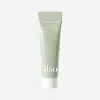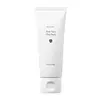What's inside
What's inside
 Key Ingredients
Key Ingredients

 Benefits
Benefits

 Concerns
Concerns

 Ingredients Side-by-side
Ingredients Side-by-side

Water
Skin ConditioningKaolin
AbrasiveGlycerin
HumectantCaprylic/Capric Triglyceride
MaskingHectorite
Absorbent1,2-Hexanediol
Skin ConditioningGlyceryl Stearate Se
EmulsifyingSorbitan Olivate
EmulsifyingCetearyl Olivate
Cetyl Alcohol
EmollientPhoenix Dactylifera Fruit Extract
EmollientFicus Carica Fruit Extract
HumectantPortulaca Oleracea Extract
Skin ConditioningSodium Hyaluronate
HumectantCeramide NP
Skin ConditioningEthylhexylglycerin
Skin ConditioningPyrus Communis Fruit Extract
Skin ConditioningSodium Acrylate/Sodium Acryloyldimethyl Taurate Copolymer
Emulsion StabilisingHedera Helix Leaf/Stem Extract
AntimicrobialPolyisobutene
Butylene Glycol
HumectantOpuntia Ficus-Indica Stem Extract
Skin ConditioningOpuntia Coccinellifera Fruit Extract
Skin ConditioningFragaria Chiloensis Fruit Extract
Skin ConditioningPyrus Malus Leaf Extract
Skin ConditioningAdansonia Digitata Seed Extract
Skin ConditioningSorbitan Oleate
EmulsifyingCaprylyl/Capryl Glucoside
CleansingCrithmum Maritimum Callus Culture Filtrate
Skin ProtectingCentella Asiatica Extract
CleansingWater, Kaolin, Glycerin, Caprylic/Capric Triglyceride, Hectorite, 1,2-Hexanediol, Glyceryl Stearate Se, Sorbitan Olivate, Cetearyl Olivate, Cetyl Alcohol, Phoenix Dactylifera Fruit Extract, Ficus Carica Fruit Extract, Portulaca Oleracea Extract, Sodium Hyaluronate, Ceramide NP, Ethylhexylglycerin, Pyrus Communis Fruit Extract, Sodium Acrylate/Sodium Acryloyldimethyl Taurate Copolymer, Hedera Helix Leaf/Stem Extract, Polyisobutene, Butylene Glycol, Opuntia Ficus-Indica Stem Extract, Opuntia Coccinellifera Fruit Extract, Fragaria Chiloensis Fruit Extract, Pyrus Malus Leaf Extract, Adansonia Digitata Seed Extract, Sorbitan Oleate, Caprylyl/Capryl Glucoside, Crithmum Maritimum Callus Culture Filtrate, Centella Asiatica Extract
Water
Skin ConditioningKaolin
AbrasiveGlycerin
HumectantBentonite
AbsorbentDiglycerin
HumectantPropanediol
SolventZea Mays Starch
Absorbent1,2-Hexanediol
Skin ConditioningQuercus Acutissima Fruit Extract
AstringentXanthan Gum
EmulsifyingPolyglycerin-3
HumectantCentella Asiatica Leaf Extract
Skin ConditioningSodium Acrylate/Sodium Acryloyldimethyl Taurate Copolymer
Emulsion StabilisingPolyisobutene
Ethylhexylglycerin
Skin ConditioningQuercus Acutissima Fruit Powder
AstringentButylene Glycol
HumectantMethyl Diisopropyl Propionamide
MaskingDisodium EDTA
Caprylyl/Capryl Glucoside
CleansingSorbitan Oleate
EmulsifyingSaccharide Hydrolysate
HumectantIllite
AbrasiveCentella Asiatica Extract
CleansingSodium Hyaluronate
HumectantMontmorillonite
AbsorbentArtemisia Princeps Leaf Extract
Skin ConditioningMentha Arvensis Extract
MaskingViscum Album Leaf Extract
SoothingHamamelis Virginiana Extract
AntiseborrhoeicHyaluronic Acid
HumectantMentha Suaveolens Leaf Extract
AstringentMentha Viridis Extract
MaskingCI 77891
Cosmetic ColorantCI 77492
Cosmetic ColorantWater, Kaolin, Glycerin, Bentonite, Diglycerin, Propanediol, Zea Mays Starch, 1,2-Hexanediol, Quercus Acutissima Fruit Extract, Xanthan Gum, Polyglycerin-3, Centella Asiatica Leaf Extract, Sodium Acrylate/Sodium Acryloyldimethyl Taurate Copolymer, Polyisobutene, Ethylhexylglycerin, Quercus Acutissima Fruit Powder, Butylene Glycol, Methyl Diisopropyl Propionamide, Disodium EDTA, Caprylyl/Capryl Glucoside, Sorbitan Oleate, Saccharide Hydrolysate, Illite, Centella Asiatica Extract, Sodium Hyaluronate, Montmorillonite, Artemisia Princeps Leaf Extract, Mentha Arvensis Extract, Viscum Album Leaf Extract, Hamamelis Virginiana Extract, Hyaluronic Acid, Mentha Suaveolens Leaf Extract, Mentha Viridis Extract, CI 77891, CI 77492
 Reviews
Reviews

Ingredients Explained
These ingredients are found in both products.
Ingredients higher up in an ingredient list are typically present in a larger amount.
1,2-Hexanediol is a synthetic liquid and another multi-functional powerhouse.
It is a:
- Humectant, drawing moisture into the skin
- Emollient, helping to soften skin
- Solvent, dispersing and stabilizing formulas
- Preservative booster, enhancing the antimicrobial activity of other preservatives
Butylene Glycol (or BG) is used within cosmetic products for a few different reasons:
Overall, Butylene Glycol is a safe and well-rounded ingredient that works well with other ingredients.
Though this ingredient works well with most skin types, some people with sensitive skin may experience a reaction such as allergic rashes, closed comedones, or itchiness.
Learn more about Butylene GlycolCaprylyl/Capryl Glucoside is an alkyl glucoside. This just means it is creating by reacting alcohol and sugar. It is a cleansing and foaming ingredient.
Caprylyl/Capryl Glucoside helps remove the dirt, oil, and other pollutants from your skin.
Centella Asiatica Extract (Centella) is derived from an herb native to Southeast Asia. It is famous for its anti-inflammatory and soothing properties.
Centella is rich in antioxidants and amino acids, such as Madecassic Acid and Asiaticoside.
Studies show the compounds in centella help with:
The combination of all these properties makes centella effective at soothing, hydrating, and protecting the skin.
Other great components of centella include Vitamin A, vitamin C, several B vitamins, and Asiatic Acid.
Fun fact: Centella has been used as a medicine and in food for many centuries. As a medicine, it is used to treat burns, scratches, and wounds.
Learn more about Centella Asiatica ExtractEthylhexylglycerin (we can't pronounce this either) is commonly used as a preservative and skin softener. It is derived from glyceryl.
You might see Ethylhexylglycerin often paired with other preservatives such as phenoxyethanol. Ethylhexylglycerin has been found to increase the effectiveness of these other preservatives.
Glycerin is already naturally found in your skin. It helps moisturize and protect your skin.
A study from 2016 found glycerin to be more effective as a humectant than AHAs and hyaluronic acid.
As a humectant, it helps the skin stay hydrated by pulling moisture to your skin. The low molecular weight of glycerin allows it to pull moisture into the deeper layers of your skin.
Hydrated skin improves your skin barrier; Your skin barrier helps protect against irritants and bacteria.
Glycerin has also been found to have antimicrobial and antiviral properties. Due to these properties, glycerin is often used in wound and burn treatments.
In cosmetics, glycerin is usually derived from plants such as soybean or palm. However, it can also be sourced from animals, such as tallow or animal fat.
This ingredient is organic, colorless, odorless, and non-toxic.
Glycerin is the name for this ingredient in American English. British English uses Glycerol/Glycerine.
Learn more about GlycerinKaolin is a clay. It is used for oil control and to help minimize pores. Like other clays, kaolin has the ability to absorb excess sebum or oil. This can help clean out pores and mattify the skin.
Some types of kaolin may have exfoliating properties. When water is added to kaolin, it becomes a paste with small abrasive particles.
Most kaolin is a white color, but may be pink/orange/red depending on where it comes from.
The name 'kaolin' comes from a Chinese village named 'Gaoling'. Kaolin clay comes from rocks rich in kaolinite. Kaolinite, the mineral, has a silicate layered structure. Kaolinite is formed from chemical weathering of aluminum siilicate minerals.
Besides skincare, kaolin is commonly used to make glossy paper, in ceramics, toothpaste, and as medicine to soothe stomach issues.
Learn more about KaolinPolyisobutene is a synthetic polymer made from isobutene.
It is a film-forming agent and helps bind ingredients together.
Polyisobutene is not absorbed by the skin.
Learn more about PolyisobuteneThis long ingredient is a copolymer of sodium acrylate and sodium acryloyldimethyl taurate monomers.
It is used to help stabilize other ingredients and create a thicker gel-like texture.
Emulsifiers prevent oils and waters from separating.
Learn more about Sodium Acrylate/Sodium Acryloyldimethyl Taurate CopolymerSodium Hyaluronate is hyaluronic acid's salt form. It is commonly derived from the sodium salt of hyaluronic acid.
Like hyaluronic acid, it is great at holding water and acts as a humectant. This makes it a great skin hydrating ingredient.
Sodium Hyaluronate is naturally occurring in our bodies and is mostly found in eye fluid and joints.
These are some other common types of Hyaluronic Acid:
Learn more about Sodium HyaluronateSorbitan Oleate is created from compounds in oleic acid and sorbitol.
It is used to stabilize a product by preventing ingredients from separating. Emulsifiers help keep ingredients together, such as oils and water.
According to a manufacturer, the ingredient Sorbitan Monooleate shares an INCI name with this one.
Sorbitan Oleate may not be fungal acne safe. It can also worsen oily skin.
Learn more about Sorbitan OleateWater. It's the most common cosmetic ingredient of all. You'll usually see it at the top of ingredient lists, meaning that it makes up the largest part of the product.
So why is it so popular? Water most often acts as a solvent - this means that it helps dissolve other ingredients into the formulation.
You'll also recognize water as that liquid we all need to stay alive. If you see this, drink a glass of water. Stay hydrated!
Learn more about Water